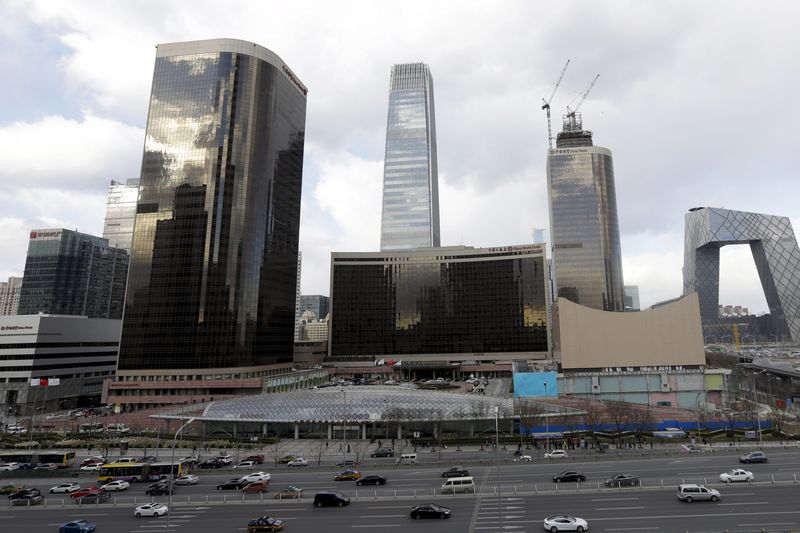(Bloomberg) --
China’s top leaders next month will lay out their economic strategy for the next five years that will include a new ambition to ramp up domestic consumption and make more critical technology at home in a bid to insulate the world’s second-largest economy from swirling geopolitical tensions.
Described as a strategy of ‘dual circulation’ in recent speeches by President Xi Jinping, the plan is for a more self-reliant domestic economy to serve as China’s main growth driver, supplemented by foreign technologies and investment. While details are scant so far and much of the policy ambition is already in shape in one form or another, the speeches indicate the importance of this new policy.
President Donald Trump’s aggressive efforts to curb the spread of Chinese companies and limit their access to U.S. technology is accelerating this shift inwards. It’s a policy change that may have knock on implications for the flow of goods and services around the world if it drives a concerted effort to replace imports, potentially deepening the schism with the U.S.
“The ‘dual circulation’ idea came partly as a reaction to the relentless effort from the U.S. to try to engineer a decoupling of China from the world economy, and partly as a result of the Covid-19 pandemic,” said Shang-Jin Wei, a China expert at Columbia Business School in New York and formerly chief economist of the Asian Development Bank.
There’s been some glimpses of what the policy might mean. In July, Xi called for stronger national car brands and developing key technologies domestically, but also urged foreign executives to stay in China and invest more. In a speech last week, he said China needed stronger innovation and “breakthroughs in key and core technologies as soon as possible.”
Learn from Xi
On Tuesday, the People’s Daily published a commentary about the importance of learning from that speech, emphasizing its importance as part of the leadership’s plans for China’s development.
Slogans coined by the top leadership are often theoretical and vague in the beginning, but become concrete policy over time. “Supply-side reform” was first mentioned in November 2015 with little explanation, but was later manifested in reforms such as financial deleveraging and sweeping cuts to excess capacity in steel and coal.
Read more: Xi Speeds Up China’s Inward Economic Pivot in More Hostile World
The meeting to consider the draft plan comes after a tough five years for the Chinese economy, beset by the after effects of a burst stock bubble and currency devaluation, the trade war and the Covid-19 pandemic, which pushed it into an unprecedented contraction. Now, the leadership in Beijing must try to plot a growth course which limits the U.S. ability to further hurt China but doesn’t alienate other nations.
“Xi is not actually suggesting that China retreat from the world stage,” Gilliam Collinsworth Hamilton, a China analyst at Gavekal Dragonomics, wrote in a report. “Rather, the ‘dual circulation’ slogan is an attempt to have it both ways: for China to gain more control over its long-term growth without losing its role as a central hub in the global economy.”
Pushing consumers to drive more growth has been a core policy for over a decade now and had been showing some success, with consumption comprising an average 64% of gross domestic product in 2016-2019, up from 54% in the previous five years.
What Bloomberg’s Economists Say...
China’s domestic economy has the scale for domestic circulation to support growth and there is substantial room to enhance it. At the same time a riskier and more fragmented global system will inevitably trigger efforts to ensure security of access to essential inputs, particularly in high-tech sectors. However, China is not seeking to retreat from the global economy.
Chang Shu, chief Asia economist
However, the fallout from the pandemic and the resulting contraction highlighted weakness in consumption, with retail sales shrinking for the first seven months of the year as people buy less due to lockdowns and lost income or jobs. That’s meant the main drivers for growth in 2020 have once again become government stimulus spending, investment and exports.
Previous Blowback
It’s unclear how other nations will feel about this new plan once the details are clearer. In his August speech, Xi stressed the policy shift is not about “isolated domestic circulation,” but is instead an open structure that will involve greater connection with the global system.
However, the previous ‘Made in China 2025’ industrial policy sparked alarm in Japan, Germany, the U.S. and elsewhere, where it sounded like a plan for China to undercut and replace other nations’ industries. That plan disappeared from official discourse once it became a target in the trade tensions with the U.S., but the underlying goal of develop home-grown technology to ensure Chinese self-reliance remains.
By neatly wrapping a number of existing policy goals, ‘dual circulation’ casts them in a framework that melds domestic dynamism with greater resiliency against external shocks, according to Eswar Prasad, who once led the International Monetary Fund’s China team and is now at Cornell University.
“It ties in to nationalistic aspirations of becoming less reliant on external sources for demand, technology, and financing,” Prasad said.
©2020 Bloomberg L.P.
